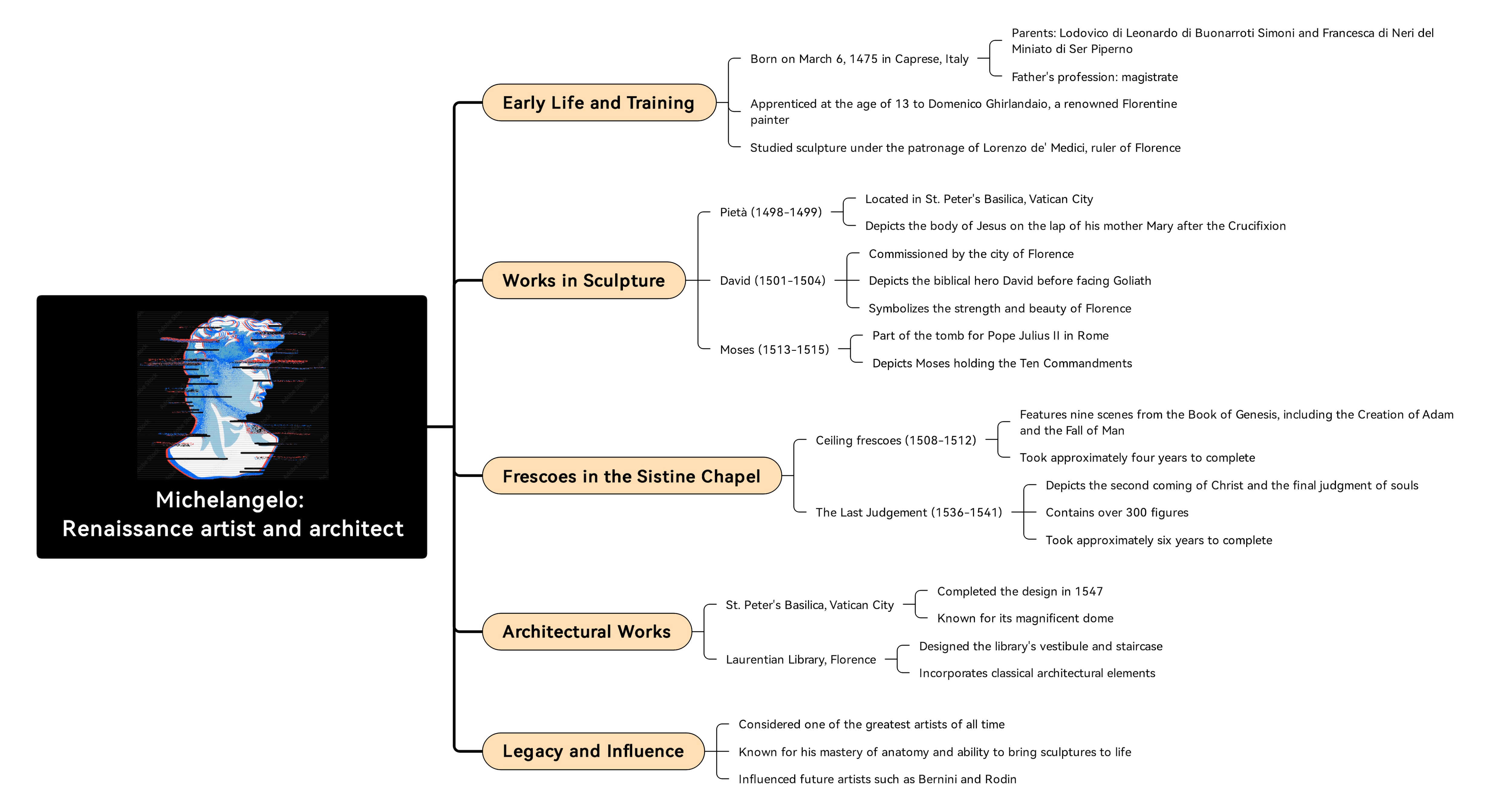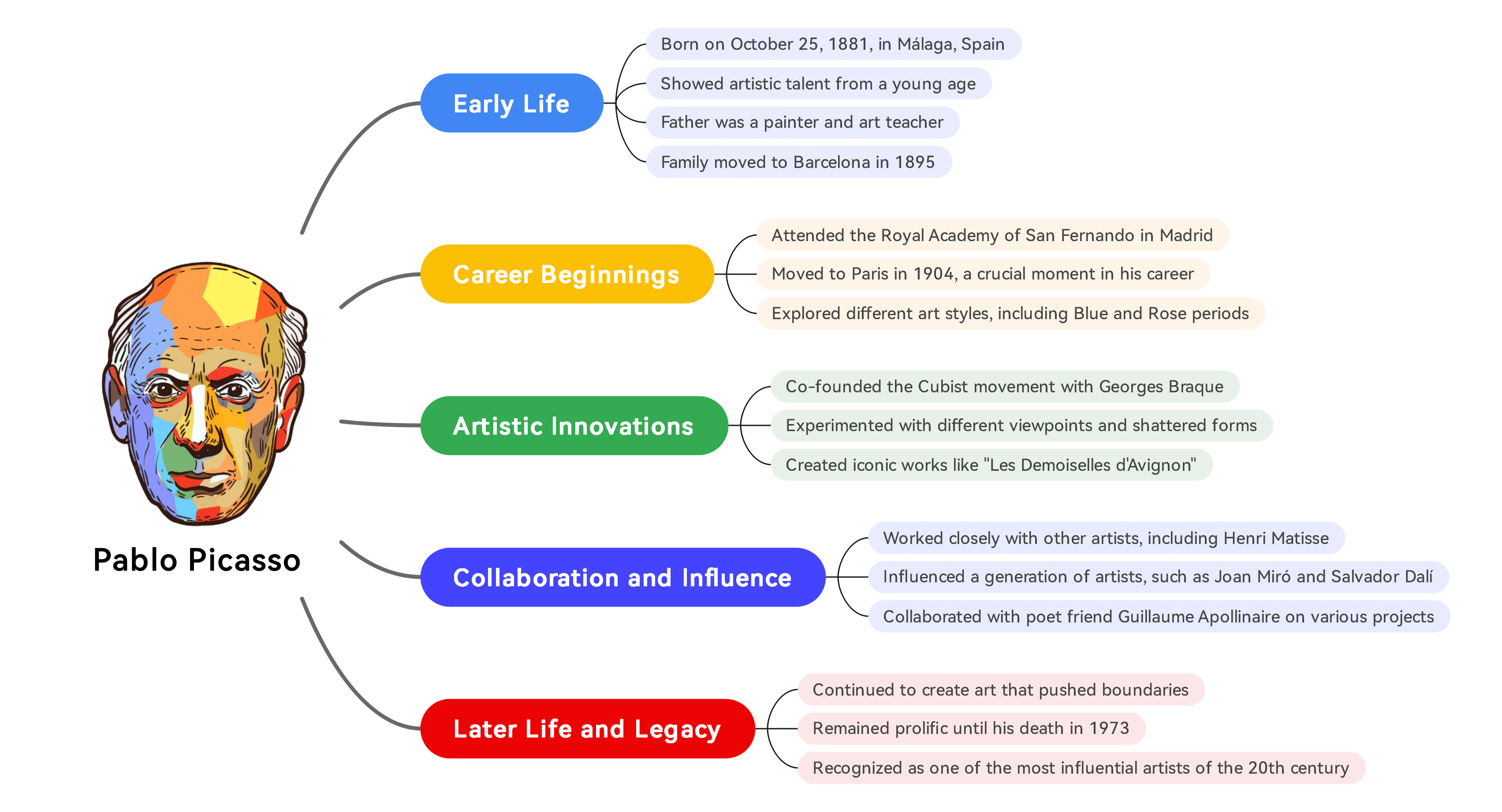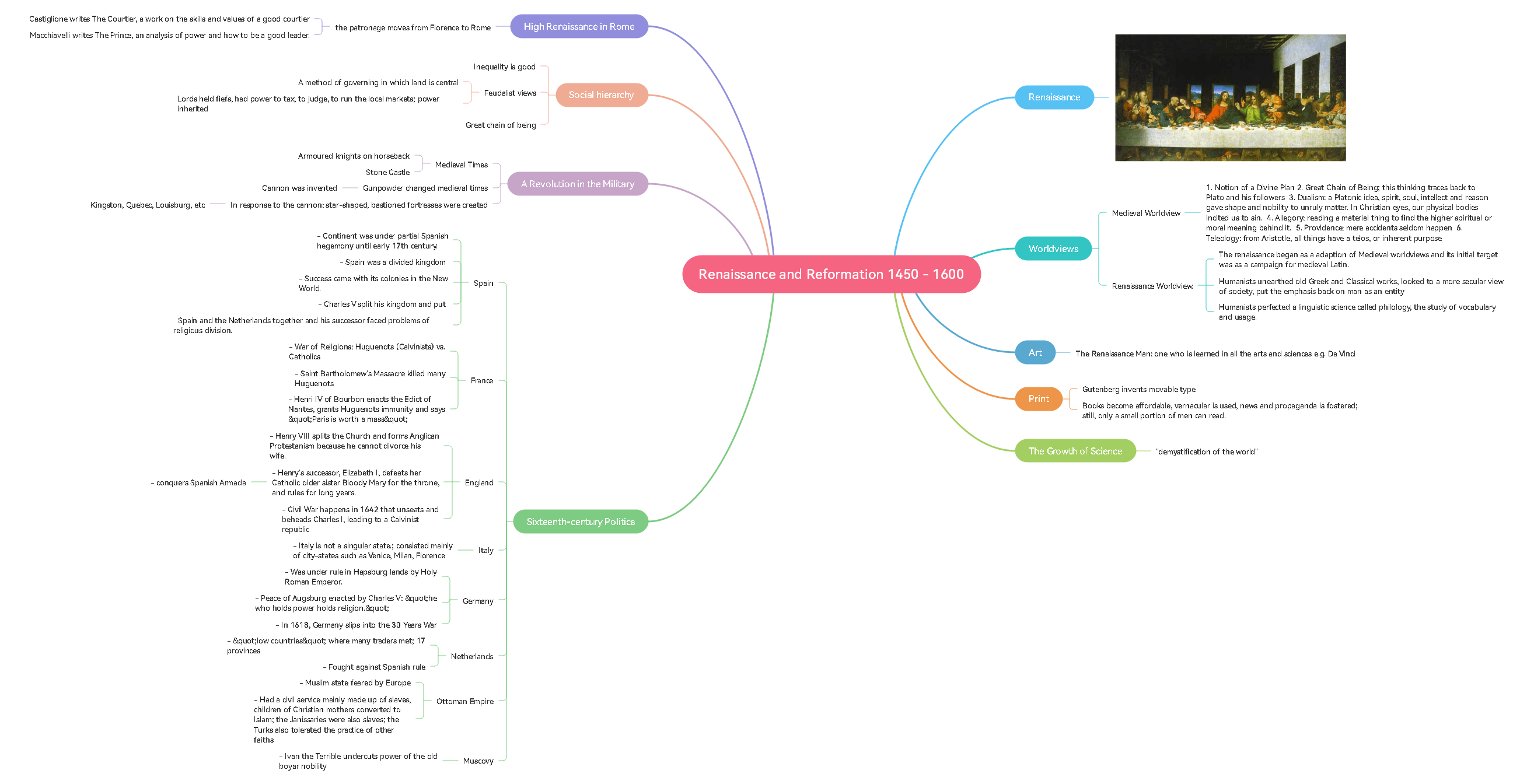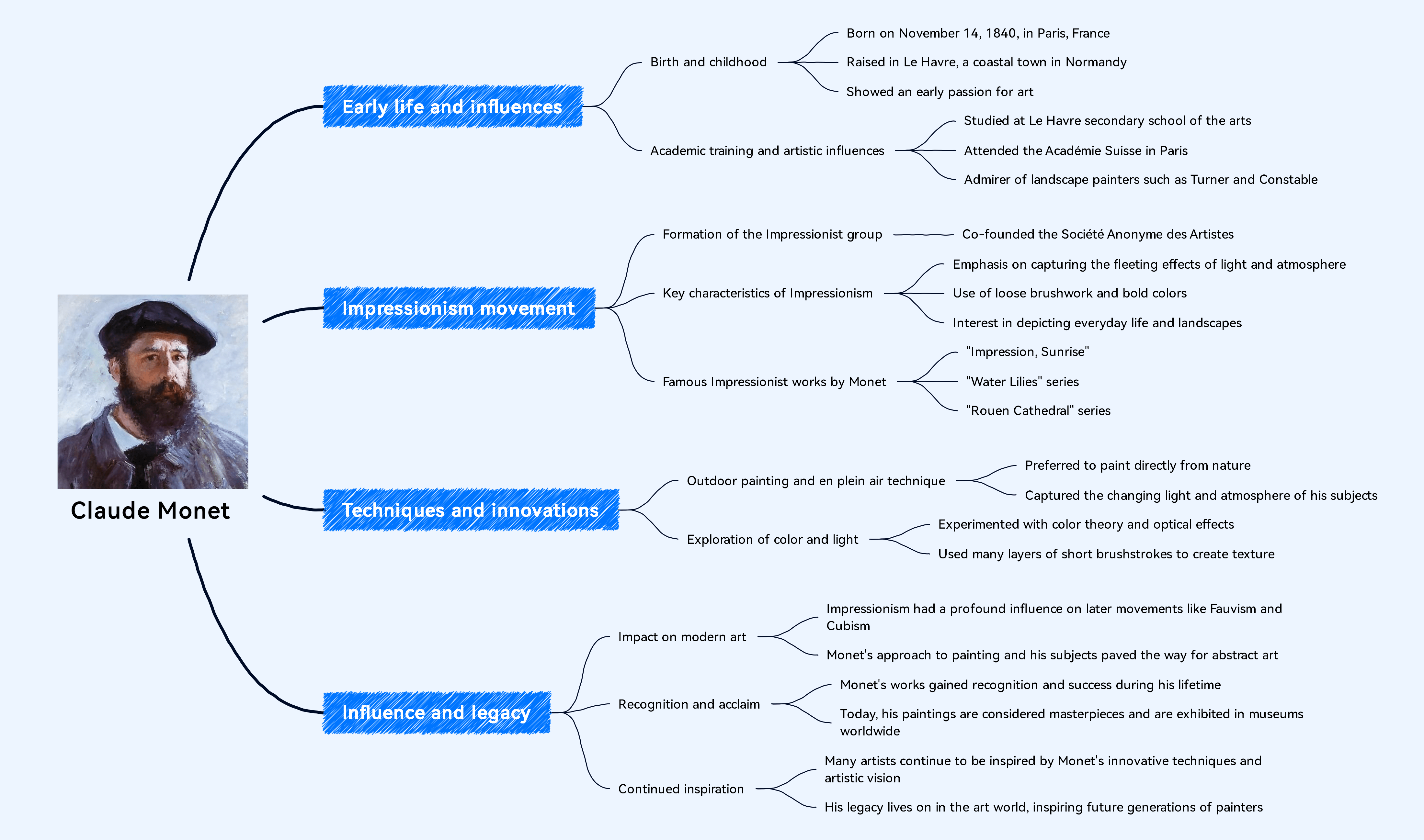Art mind maps are the graphical illustrations of all things art. Such creative mind maps are commonly used by art students who make them either understand some artists, like Leonardo DaVinci, Pablo Picasso, or Leo Tolstoy, or lay out their own plans. A typical art mind map consists of a central theme that depicts the core idea behind the mind map, followed by different branches and sub-branches that help understand the central idea in detail.
An art mind map is beneficial for students for several reasons, like:
- With art mind maps, students can easily retain and recall complex information about any artist or topic.
- Art mind maps help students learn and make connections between similar categories.
- It is in a mind map nature to break down complex relationships into smaller digestible entities.
Art students often wonder where they can start their mind-mapping journey. If you are also one of them, then you have come to the right place. In this detailed EdrawMind guide, we will explore different art mind maps for students.
5 Art Mind Map Examples for Students
Creating a mind map can be challenging for those who have never made any mind maps for personal or professional work. However, with the right tools and examples, anyone can create mind maps for their endeavors.
Here are 5 art mind map examples for students that you can download and customize per your requirements.
Leonardo DaVinci Mind Map Example
The Leonardo DaVinci mind map template explores the life and accomplishments of one of the most talked about polymaths. This art mind map template begins with his early life, upbringing, education, and formative experiences. As you can see, we have highlighted DaVinci's achievements in various mediums, including his iconic works such as Mona Lisa and The Last Supper. The mind map also explores his scientific pursuits by illustrating his groundbreaking studies in anatomy, botany, and optics. Additionally, in order to explore more on DaVinci's life through mind mapping, we have added his engineering inventions, including his designs for flying machines, war machines, and innovative architectural concepts. As illustrated here, each primary topic is detailed, and the long key phrases provide a comprehensive overview of DaVinci's genius.

Michelangelo Mind Map Template
Michelangelo's mind map template offers a detailed exploration of his upbringing, education, and early artistic influences. As you can see from this art mind map template, his work in sculpture is what we have outlined in detail when we are discussing David and the Pieta. Additionally, the mind map delves into Michelangelo's sculpting techniques, materials, and even his artistic philosophy. This artistic visual representation further highlights his monumental achievement in creating the Sistine Chapel and his designs for the dome of St. Peter's Basilica and the Medici Chapel. We also have outlined his enduring legacy and impact on subsequent generations of artists and architects.

Pablo Picasso Mind Map
Pablo Picasso's mind map offers a detailed overview of one of the most influential figures in 20th-century art. The mind map explores Picasso's upbringing, family background, and formative experiences that shed light on the factors that shaped his artistic philosophy in the later years of his life. As illustrated here, we have traced his early training and emergence as a prodigious talent in the art world. In order to explore more about his life, you can also add the details of his time in Barcelona and his move to Paris. Furthermore, this mind map template highlights Picasso's artistic innovations, like Cubism, Surrealism, and Neoclassicism, while exploring more on his themes, techniques, and influences that demonstrated his revolutionary approach to the art world that resonates with contemporary artists and audiences worldwide.

Renaissance Mind Map Template
The Renaissance mind map template provides a detailed overview of the transformative period from 1450 to 1600. The mind map encompasses cultural, intellectual, and societal developments that lead to the development of the current Western world. As you can see, the mind map explores the Renaissance by exploring its origin, rediscovery of classical texts, and flourishing arts and science. It further highlights the shifts in philosophical, religious, and scientific paradigms that challenged medieval conventions and created a path for modern thoughts. In this mind map, we have also talked about the political developments of the sixteenth century, like the rise of nation-states and the consolidation of power by monarchies.

Claude Monet Mind Map
The Claude Monet mind map template explores the life and artistic contribution of the acclaimed impressionist painter. The mind map starts by exploring his early life, upbringing, education, and early artistic influences. Furthermore, the mind map highlights Monet's techniques and innovations, showcasing his mastery of light, color, and atmosphere and his widely famous approach to capturing fleeting moments and sensory impressions on canvas. Through long keyphrases, this art mind map on Claude Monet further offers a deeper understanding of his work, artistic style, and how it helped modern art's evolution.

Start Mind Mapping With EdrawMind
Art mind maps usually consist of different images, media files, and multiple colors. As depicted in the art mind map examples for students, we added multiple colors that resonated with the core idea.
Creating a mind map with modern tools is easy and provides an engaging environment. All of the art mind map examples that we discussed in this guide can be downloaded from EdrawMind. Moreover, this free mind mapping software comes with 1,500+ more such templates that help the students create any type of mind map. The latest version of EdrawMind also offers an AI assistant that lets you create, analyze, and draw any mind map with just a simple, straightforward prompt. Download EdrawMind today and start making amazing art mind maps.
Art Mind Map FAQs
What is the benefit of a Mind Map for Art Creation?
With a mind map in place, students can incorporate a structured yet flexible approach. Mind maps further aid in brainstorming ideas, visually mapping out creative processes, and organizing art-related concepts.
How to Use Mind Maps for Art Creation?
Students can utilize art mind maps by brainstorming different ideas, finding new connections, assigning tasks and deadlines, experimenting with the thought process, and even using them to create a well-organized plan for any artistic endeavor.



